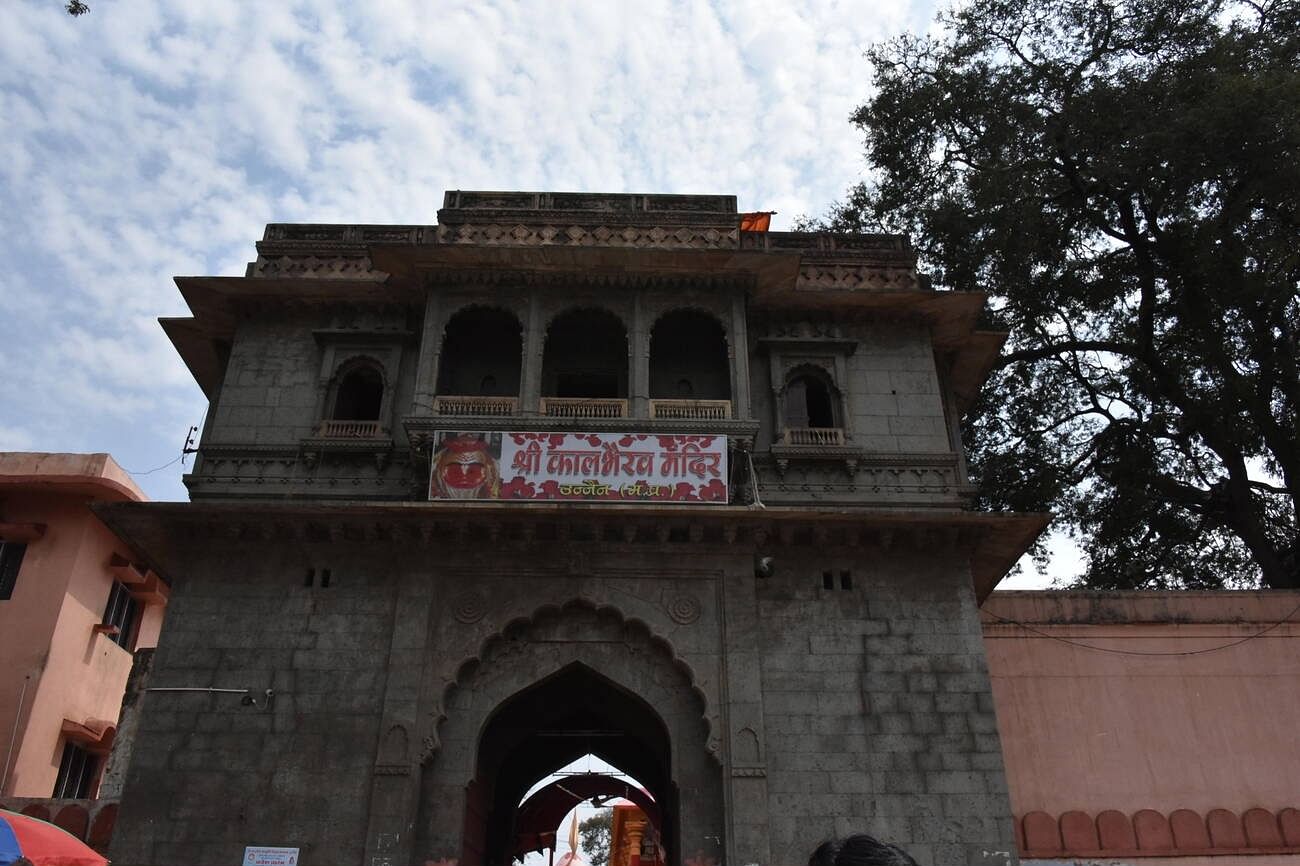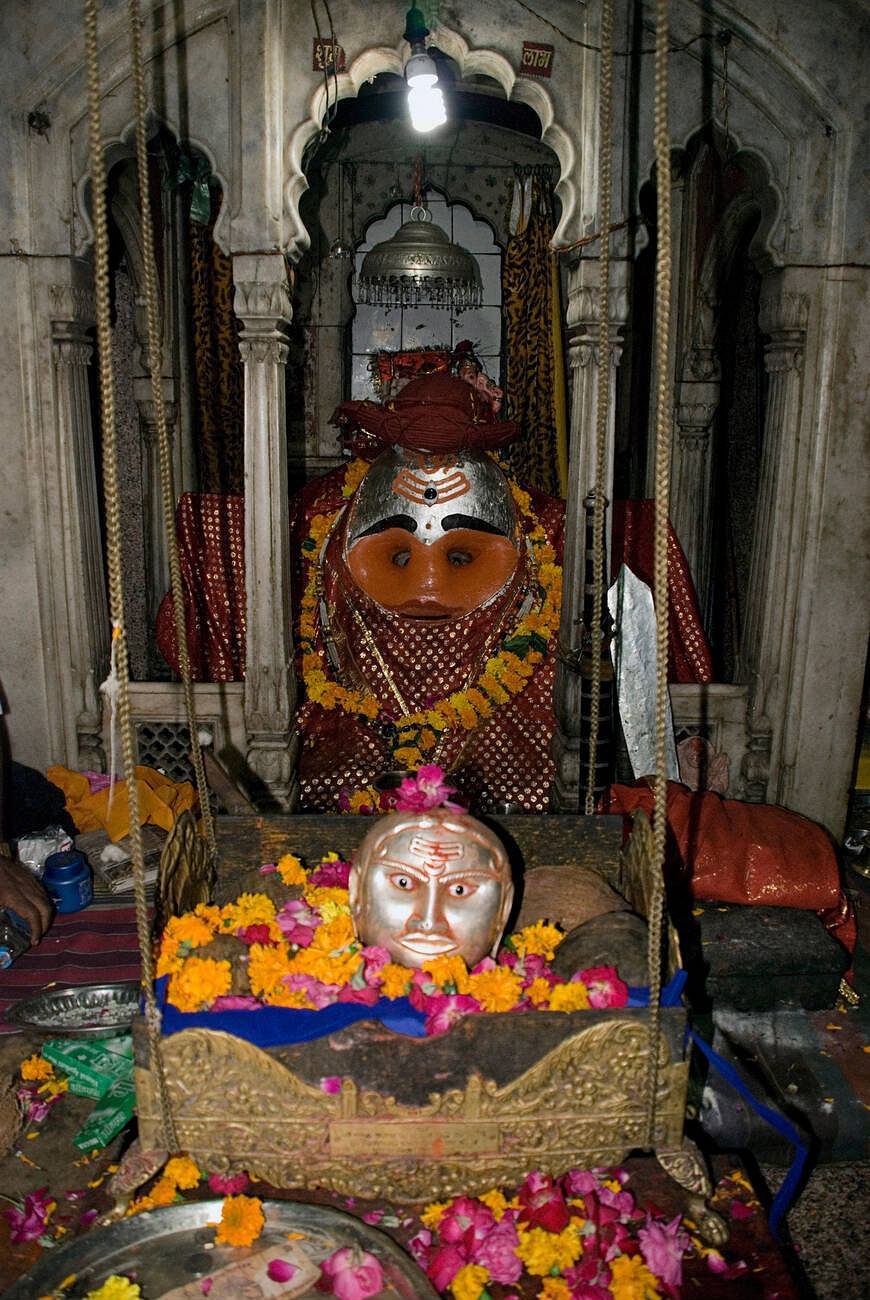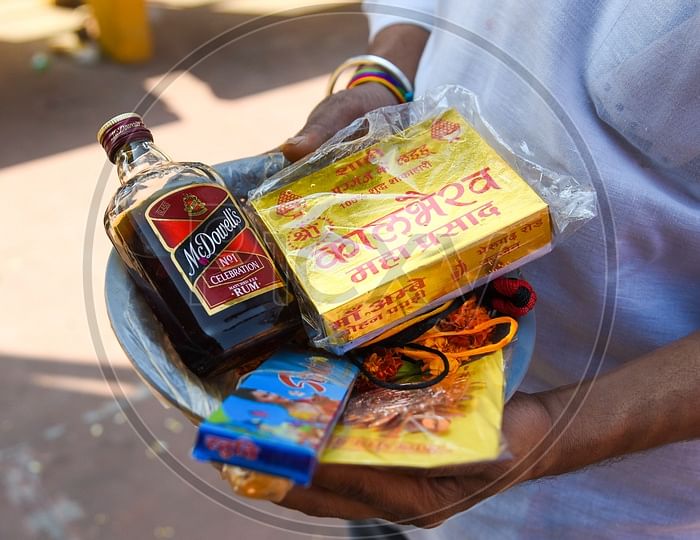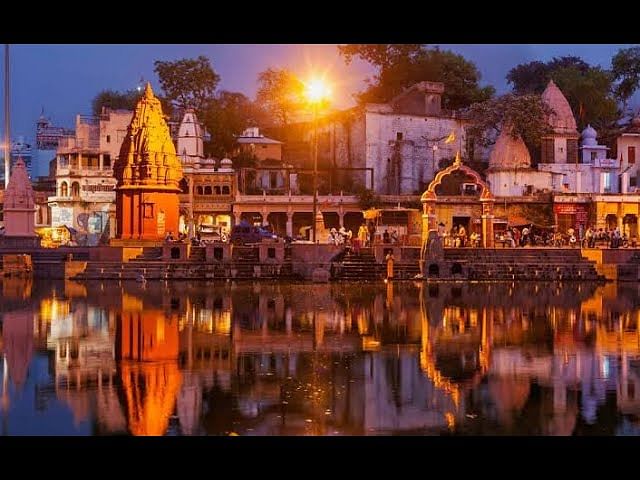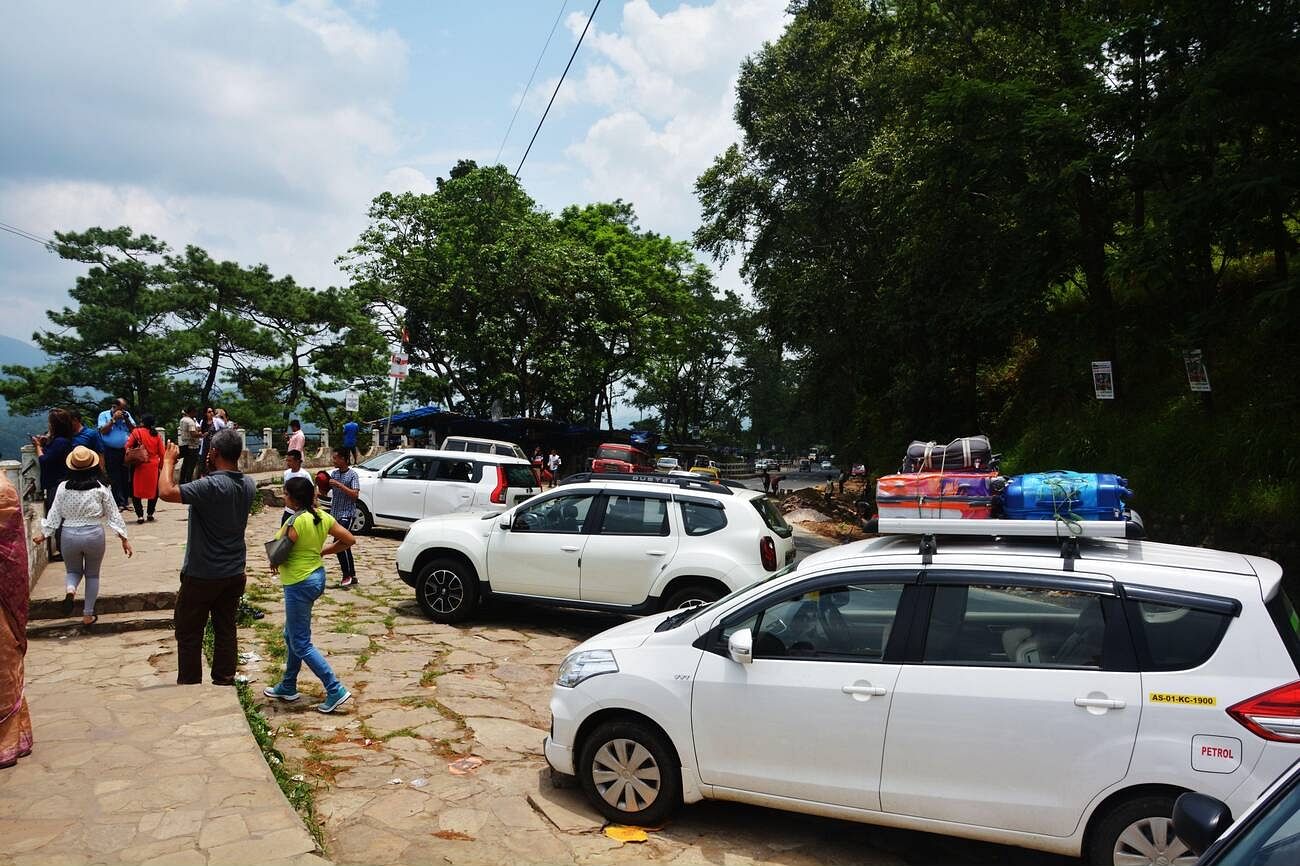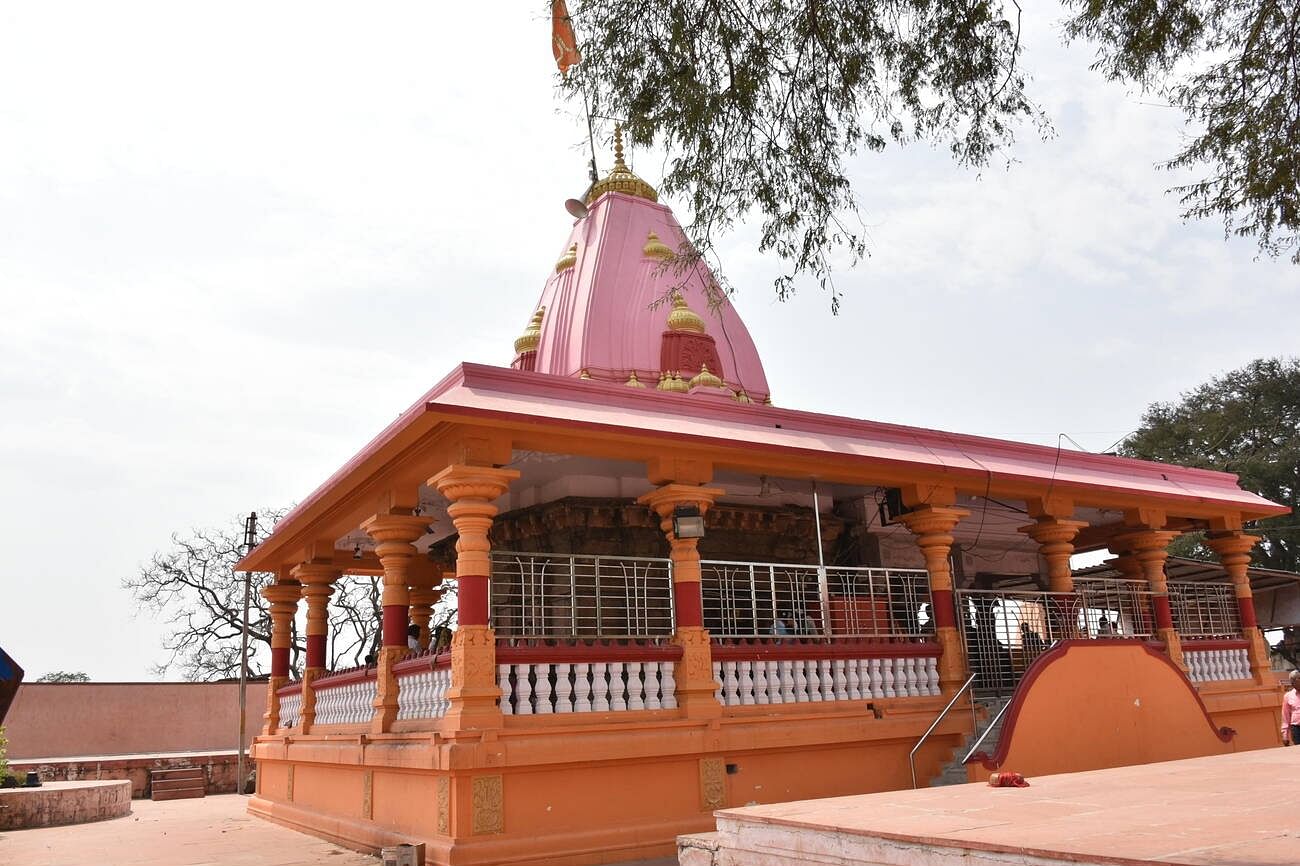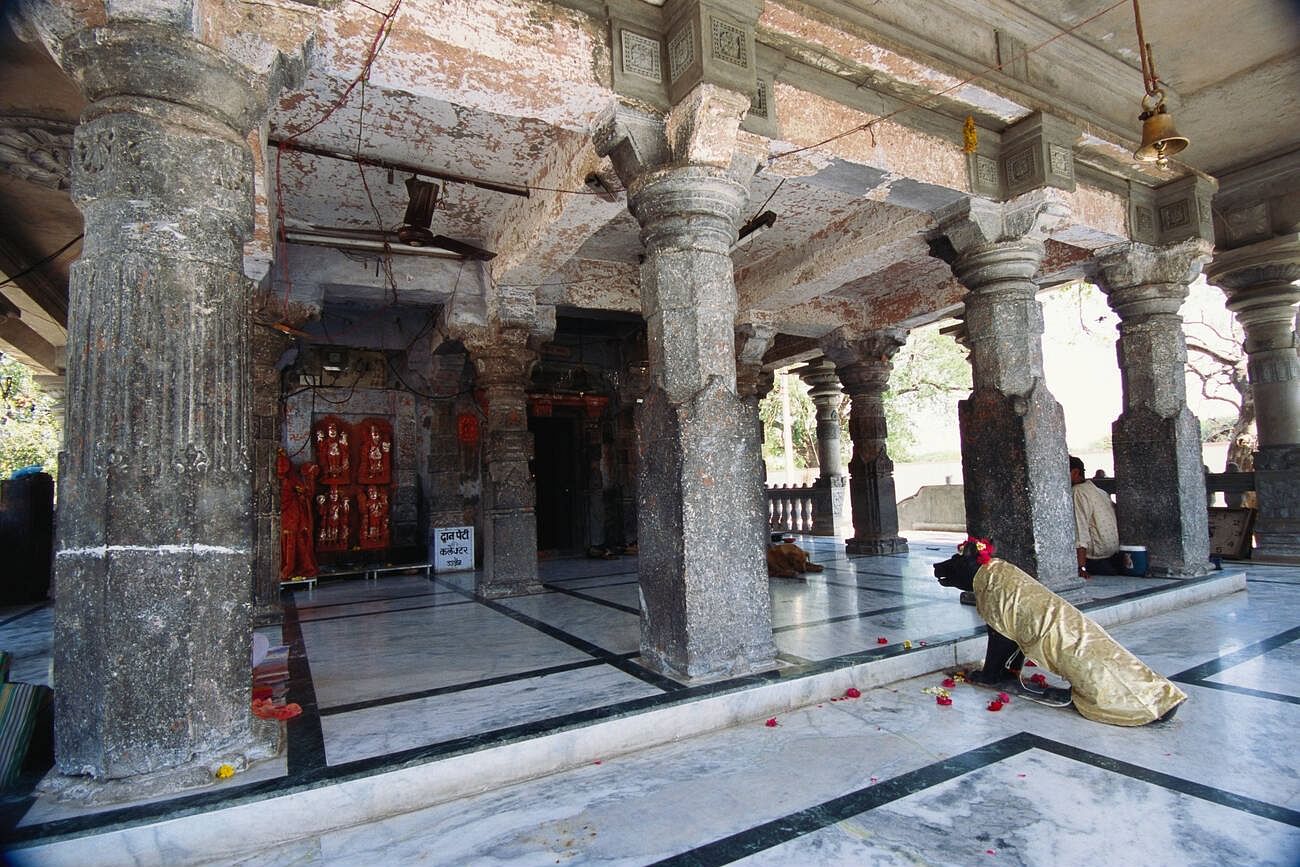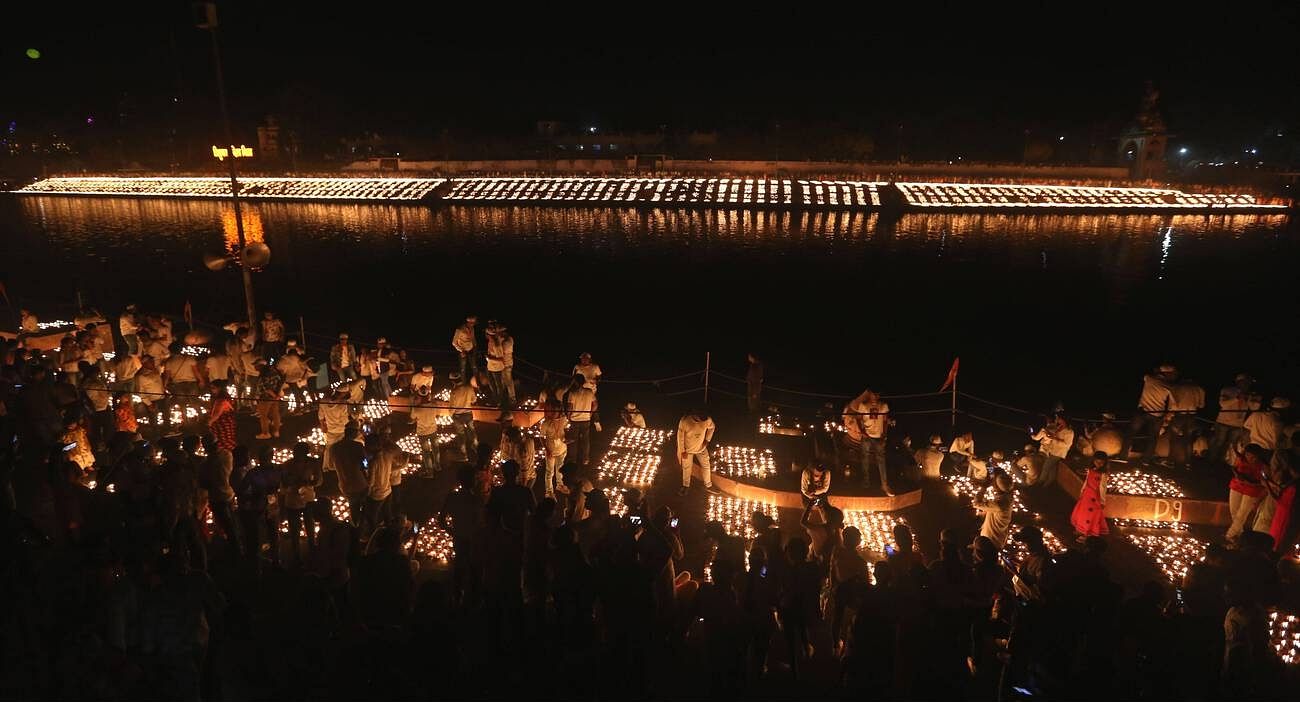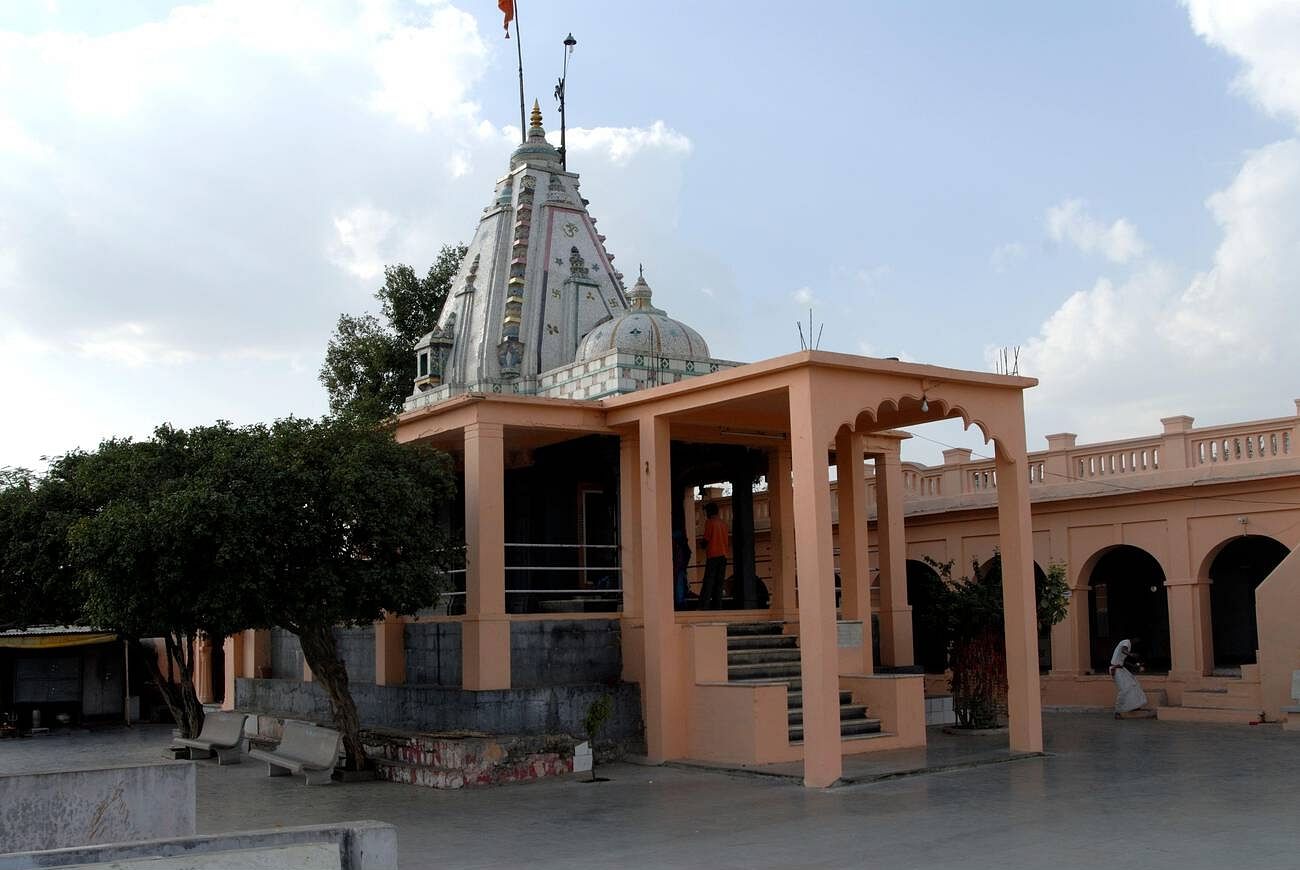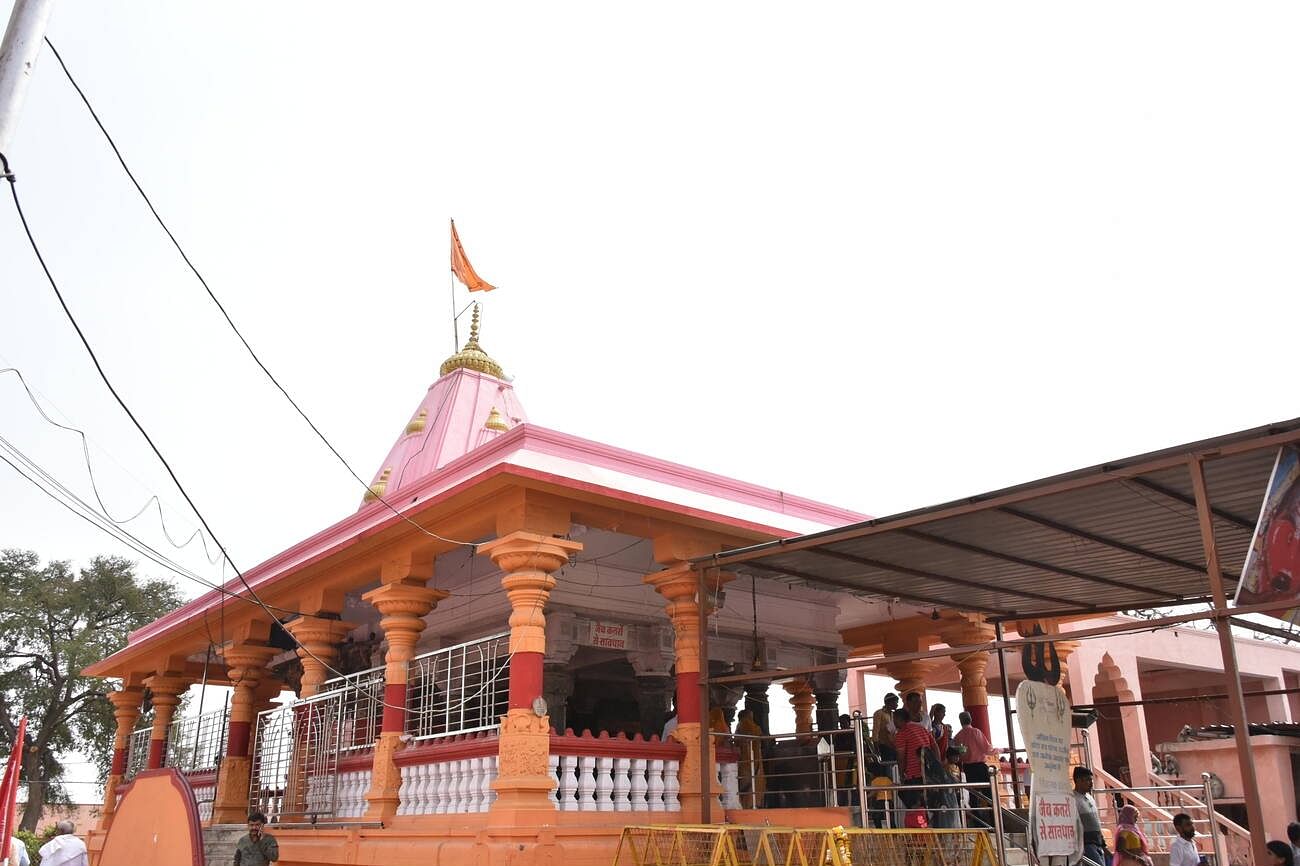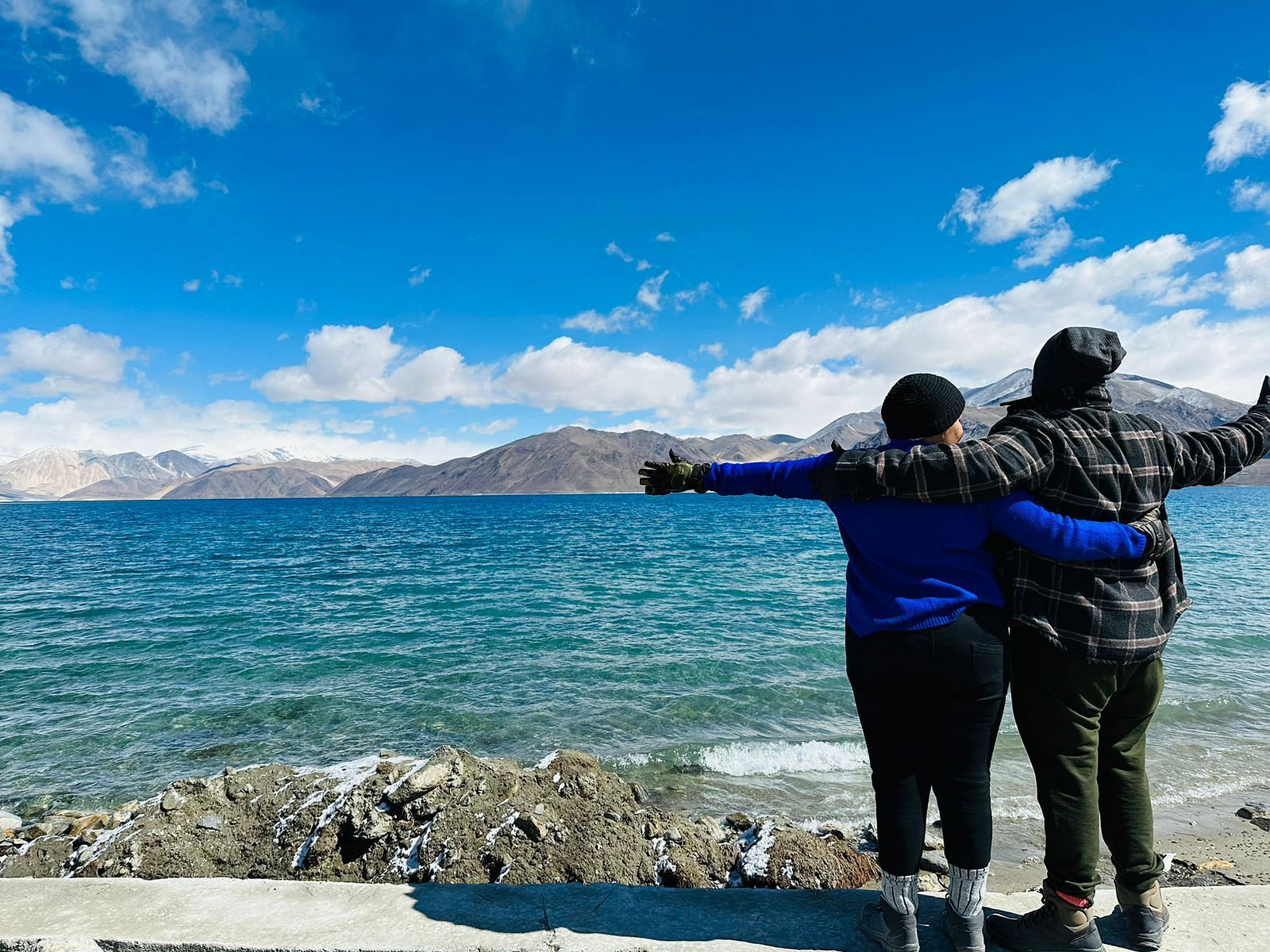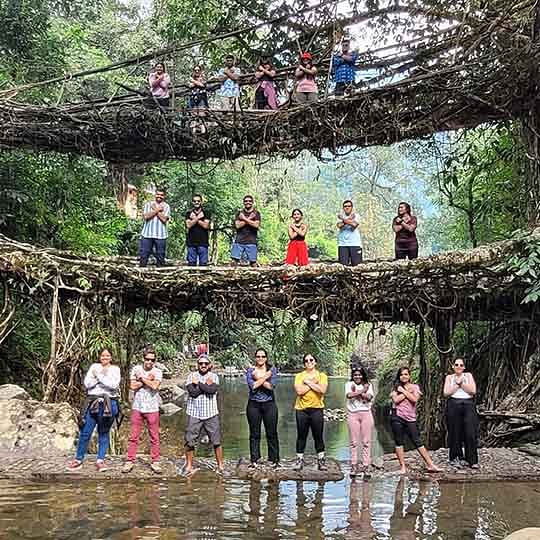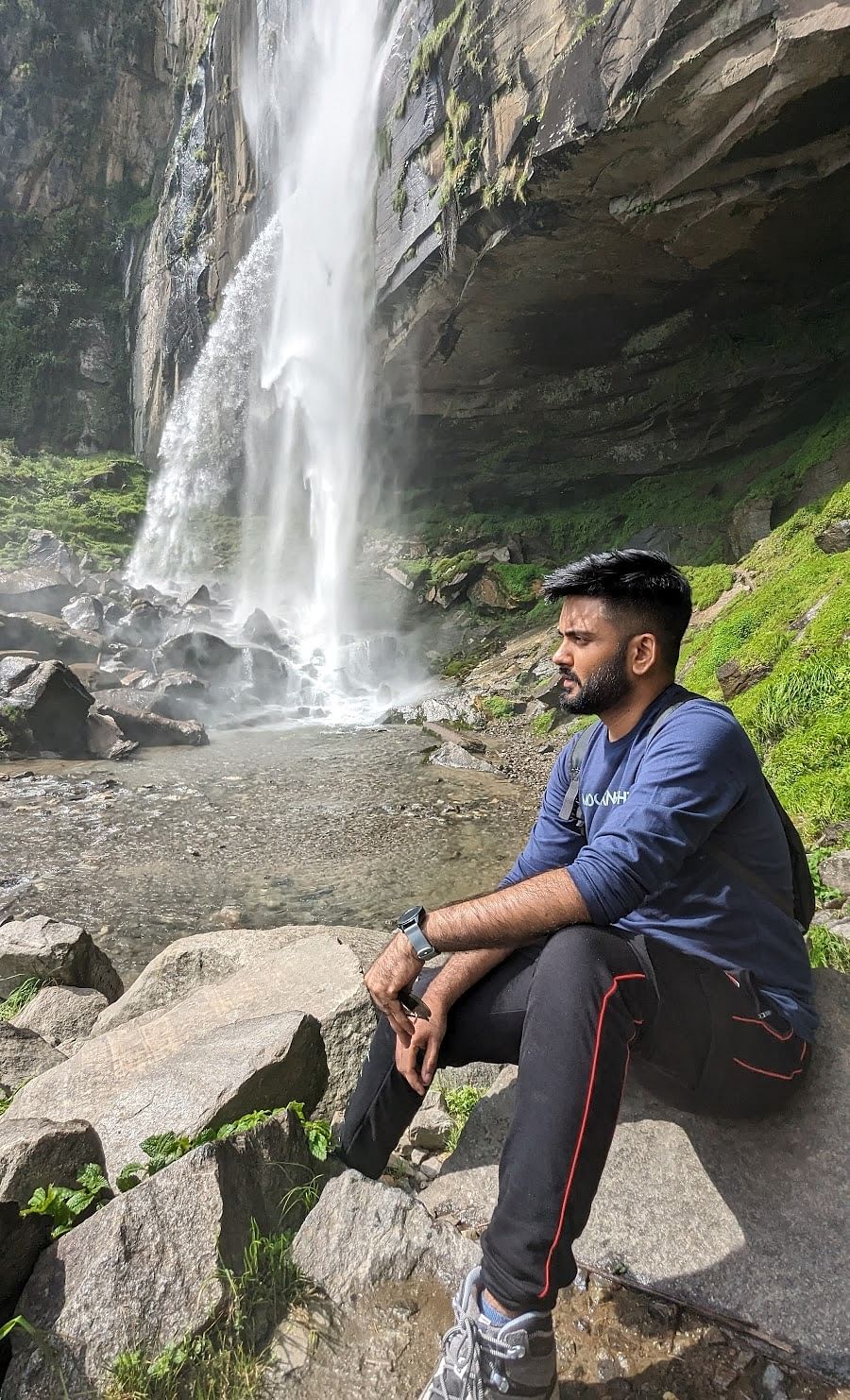It was a sunny day in Ujjain when I stumbled upon Kal Bhairav Temple and decided to stop by for blessings. But as I got closer, I was hit with the most unexpected sight—liquor shops near a temple? People actually buying bottles? Confused and curious, I walked further, only to see devotees holding these bottles of liquor as offerings. Yes, you read that right—liquor as prasad!I couldn’t believe my eyes. Were they seriously offering alcohol in a temple? And not just that, the priests were accepting it with the utmost reverence, pouring it into a bowl as if it were the most sacred offering. To top it all off, this wasn’t just for show—the liquor was being served as prasad! Devotees lined up to receive their portion, bowing their heads in faith, while I stood there trying to process this unbelievable scene.
“Why liquor?” I finally blurted out to an old man standing nearby. He chuckled and replied, “Kal Bhairav drinks what his devotees offer. Who are we to question the divine’s choice?” That one-liner left me equal parts amused and intrigued. A temple where faith and spirits mix—literally!
Suggested Read: 12 Ujjain Key Attractions You Must Know
Why does Kal Bhairav accept liquor as an offering? Is there a deeper spiritual meaning, or is it just a tradition? And does the deity really drink the liquor, as locals say? The more you think about it, the more mysterious it gets. Ready to uncover the secrets of Kal Bhairav Temple, or will you leave with more questions than answers?
Kaal Bhairav Temple History
The Kaal Bhairav Temple history dates back to ancient times. The current temple was built on the remains of an older structure. The original temple is believed to have been built by a king named Bhadrasen, and it is mentioned in the Skanda Purana, an important ancient text.Items found at the temple, like statues of Shiva, Parvati, Vishnu, and Ganesha, come from the Paramara period, which was between the 9th and 13th centuries. The walls of the old temple were once decorated with Malwa-style paintings, but now only small traces of these paintings can still be seen.
The current temple also shows the influence of the Maratha style. Local tradition says that after the Marathas were defeated in the Third Battle of Panipat in 1761, a Maratha general named Mahadaji Shinde prayed at the temple for victory in his campaign to bring back Maratha power in North India. After his success, he restored the temple, which is what we see today. This is an important part of the Kal Bhairav Temple Ujjain story, showing how the temple was revived through devotion and historical events.
Suggested Read: 12 Best Places to Visit Near Mahakal Temple – Ujjain
The Ritual of Offering Liquor
Visiting the Kaal Bhairav Temple in Ujjain is an experience like no other, especially because of the intriguing and, let’s be honest, pretty fun tradition of offering liquor to the deity! This temple, dedicated to Kaal Bhairav, the fierce form of Lord Shiva, isn’t just a spiritual stop, but also a place where ancient rituals and a bit of mystery come together. It’s all part of the fascinating Kal Bhairav temple Ujjain story that has been passed down for generations.The most fascinating part? The ritual of offering liquor. Now, before you raise an eyebrow, it’s important to know this practice comes from ancient tantric traditions. Back in the day, there were five offerings. Today, only liquor remains as part of the offering, with the others reduced to symbolic acts. This part of the Kal Bhairav temple Ujjain story reflects how traditions evolve, but the core essence remains strong.
Each day, devotees head to the temple, purchasing baskets of offerings that include coconuts, flowers, and of course, a bottle of liquor from licensed vendors outside. Inside, the priest takes the liquor, pours it into a saucer, and offers it to Kaal Bhairav. But here’s the fun part: when the priest tilts the saucer near the deity’s lips (which have a mysterious slit), the liquor seemingly disappears. It’s as if the deity miraculously swallows it!
And here’s the real twist—about one-third of the bottle is returned to the devotee as prasad (a divine gift). The temple priests, along with several devoted followers, swear that the slit has no cavity, and somehow, the deity manages to “drink” the liquor. But the priest insists that only he can perform the miracle. Anyone else who tries to make the liquor vanish has failed. Intriguing, right?
So, while it might sound a little unconventional, this liquor offering is a big part of the temple’s charm. It’s a way for devotees to seek blessings from the guardian deity of Ujjain. If you ever visit, don’t miss the chance to witness this quirky and magical ritual. Who knows, you might just get a little prasad along the way, becoming part of the legendary Kal Bhairav temple Ujjain story yourself!
Best Time To Visit Kaal Bhairav Temple
The best time to visit Kaal Bhairav Temple is early in the morning when the temple is peaceful, and you can enjoy a quiet and serene atmosphere. This time also allows you to avoid the crowds, making it perfect for personal prayers and reflection.Another great time to visit is in the evening, especially during the evening aarti. The temple comes alive with vibrant energy, and the rituals create a spiritually uplifting experience.
The best time to visit Kal Bhairav Temple also depends on the weather. The months between October and March are ideal, as the weather in Ujjain is more pleasant during this period.
If you prefer to experience the temple during a festival, Maha Shivaratri is a significant time, though it attracts large crowds. For a quieter visit, weekdays or off-peak seasons are the best time to visit Kal Bhairav Temple.
Suggested Read: Ultimate Guide to the Best Places to Stay in Ujjain
How To Reach Kaal Bhairav Temple
Reaching Kaal Bhairav Temple in Ujjain is quite convenient, as the city is well-connected by various modes of transportation. Here’s a guide on how to reach Kaal Bhairav Temple:- By Air: The nearest airport to Kaal Bhairav Temple is Devi Ahilya Bai Holkar Airport in Indore, which is about 55 kilometers away. From there, you can hire a taxi or take a bus to Ujjain.
- By Train: Ujjain has a major railway station, Ujjain Junction, which is well-connected to other cities in India. Once you arrive at the station, you can take a rickshaw or taxi to the temple, which is around 3 kilometers away.
- By Bus: Ujjain is connected to major cities by a well-established bus network. You can board a bus from nearby cities like Indore, Bhopal, and others. After reaching Ujjain, local transport like taxis or auto-rickshaws can take you to the temple.
- By Road: If you’re traveling by car, Ujjain is accessible via National Highways from nearby cities. The temple is located in the heart of the city, so it’s easy to navigate with the help of a map or GPS.
Once you’re in Ujjain, the temple is well-signposted, and local transport can easily take you there.
Kaal Bhairav Temple Timings
The timings and entry fees for Kaal Bhairav Temple are as follows:The Kaal Bhairav Temple timings are from 6 am to 9 pm, allowing visitors to experience the temple at different times of the day. Early morning visits are ideal for a peaceful and serene experience, while the evening hours, especially during the aarti, offer a vibrant and spiritually uplifting atmosphere.
There is no entry fee to visit the Kaal Bhairav Temple, making it open and accessible to all devotees.
Suggested Read: Ujjain History: Ancient Roots, Spiritual Significance, and Cultural Legacy
Interesting Facts About the Kal Bhairav Temple
Some of the interesting facts about the Kal Bhairav Temple:- Unique Deity: The temple is dedicated to Kaal Bhairav, a fierce form of Lord Shiva, known as the protector of Ujjain.
- Liquor Offering: Unlike most Shiva temples, the Kaal Bhairav Temple accepts liquor as an offering, instead of milk.
- Maratha Connection: Maratha general Mahadaji Shinde prayed at the temple after the Third Battle of Panipat and restored it after his victory.
- A Temple of Protection: Kaal Bhairav is believed to protect Ujjain and its people, making the temple a place for devotees seeking strength and safety.
- Pagri Ritual: Devotees offer their turban (pagri) as a symbol of respect and devotion to Kaal Bhairav.
- Historical Significance: Originally built by King Bhadrasen, the temple has been restored multiple times, including by Mahadaji Shinde in the 18th century.
- Famous Pilgrimage Site: The temple is one of Ujjain’s most revered landmarks and a key part of India’s spiritual heritage.
Suggested Read: Best Places to Eat in Ujjain- Explore Ujjain’s Culinary Gems
Major Festivals And Events Celebrated At Shree Kaal Bhairav Mandir in Ujjain
- Maha Shivaratri: This is one of the major festivals and events celebrated at Shree Kaal Bhairav Mandir in Ujjain. Devotees gather in large numbers to offer prayers, perform rituals, and celebrate the night in honor of Lord Shiva. Special aartis and ceremonies take place throughout the night.
- Kaal Bhairav Ashtami: A special event dedicated to Lord Kaal Bhairav, where devotees observe fasting and perform elaborate rituals. The temple sees a large influx of devotees seeking blessings on this day.
- Navratri: During the nine nights of Navratri, special prayers and events are held at the temple, focusing on worshiping Goddess Durga and Lord Shiva. Devotees participate in various cultural programs and aartis.
- Bhairav Jayanti: This day marks the birth of Lord Bhairav, and special prayers, aartis, and offerings are made to honor his significance as the protector of Ujjain. This is one of the major festivals and events celebrated at Shree Kaal Bhairav Mandir in Ujjain.
- Weekly Rituals: Every Tuesday and Saturday, the temple experiences a rush of devotees as these days are considered auspicious for worshiping Kaal Bhairav. Special prayers and rituals are carried out on these days.
These major festivals and events celebrated at Shree Kaal Bhairav Mandir in Ujjain makes a lively and spiritually significant place, attracting thousands of devotees throughout the year.
Nearby Attractions To Visit Around Shree Kaal Bhairav Mandir Ujjain
Some of the popular nearby attractions to visit around Shree Kaal Bhairav Mandir Ujjain are:- Mangalnath Temple: Located a short distance from Kaal Bhairav Mandir, Mangalnath Temple is dedicated to Lord Mangal (Mars). It is believed to be the birthplace of the planet Mars and holds significant astrological importance.
- Bhartrihari Caves: These caves are associated with the great poet and philosopher Bhartrihari. Located near the banks of the Shipra River, the caves offer a peaceful spot for reflection and have a rich historical and spiritual background.
- Ram Ghat: Situated along the banks of the Shipra River, Ram Ghat is one of the most famous ghats in Ujjain. It is an important place for ritual bathing and witnessing aarti ceremonies in the evening.
- Harsiddhi Temple: A significant Shakti Peetha, Harsiddhi Temple is dedicated to Goddess Harsiddhi. It is a place of great spiritual significance, attracting pilgrims seeking blessings for strength and prosperity.
Suggested Read: Ghadi Wale Baba, Ujjain: Story Of Clock Saint and Clock Tree
Tips for Visiting Kaal Bhairav Temple Ujjain
Some of the tips for visiting Kaal Bhairav Temple Ujjain:- Dress Modestly: Since it’s a religious place, it’s important to dress respectfully. Avoid wearing shorts or revealing clothing.
- Plan Early Morning or Evening Visits: The temple is less crowded in the early morning or late evening, allowing for a more peaceful and spiritual experience.
- Respect the Rituals: The temple has unique offerings like Kaal Bhairav Temple Ujjain alcohol. Be mindful of local customs and participate respectfully in the rituals.
- Avoid Peak Hours: To avoid large crowds, try to visit on weekdays or outside peak festival times like Maha Shivaratri or Kaal Bhairav Ashtami.
- Carry Essentials: Bring along water, as it can get hot in Ujjain, especially during summer. Comfortable shoes are also recommended for walking around the temple and nearby areas.
- Be Cautious with Your Belongings: As with any popular tourist site, keep an eye on your belongings to avoid theft or loss in crowded areas.
- Offerings: While the temple doesn’t accept milk, it’s common to offer Kaal Bhairav Temple Ujjain alcohol. Ensure you follow the local customs properly.





